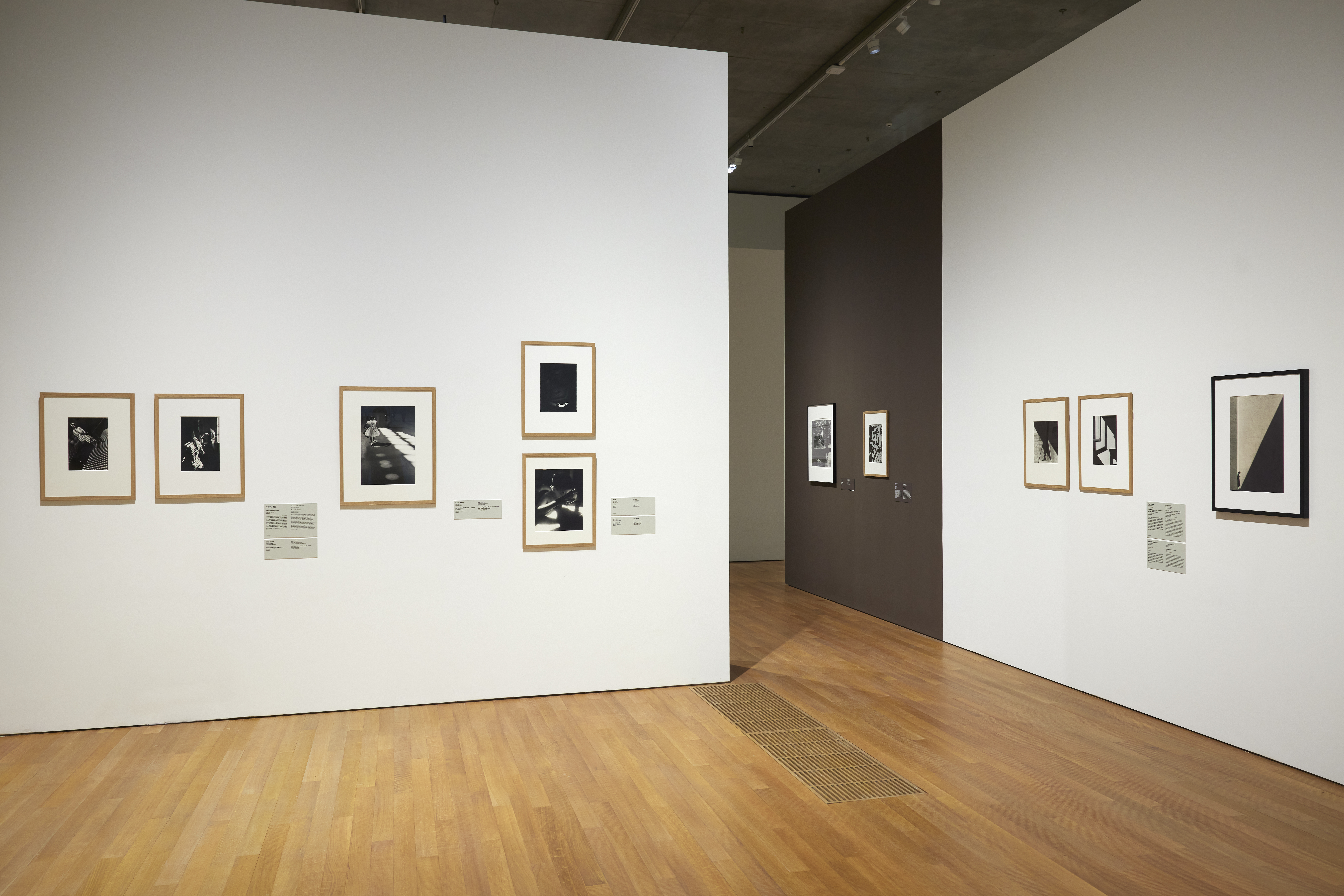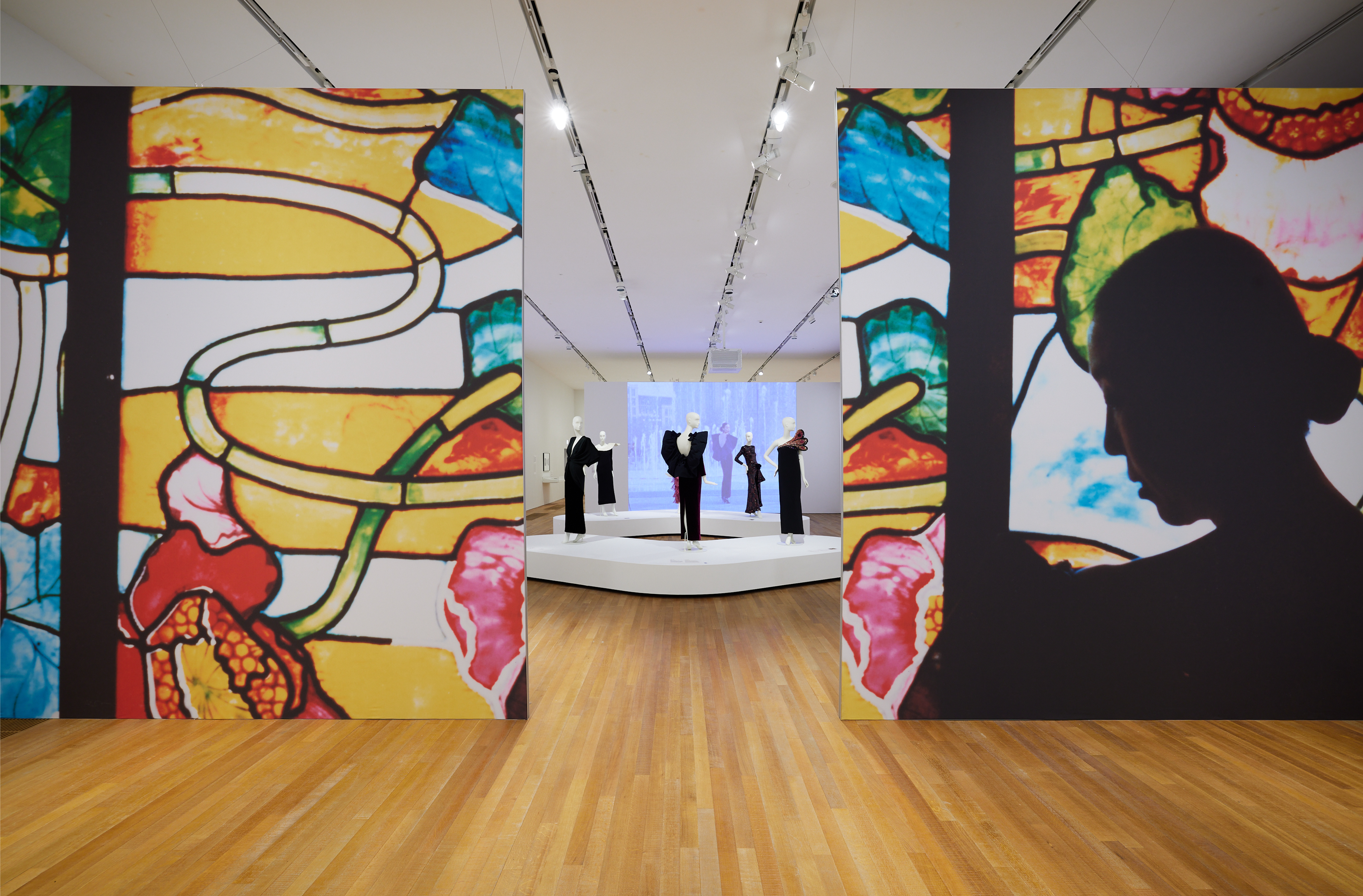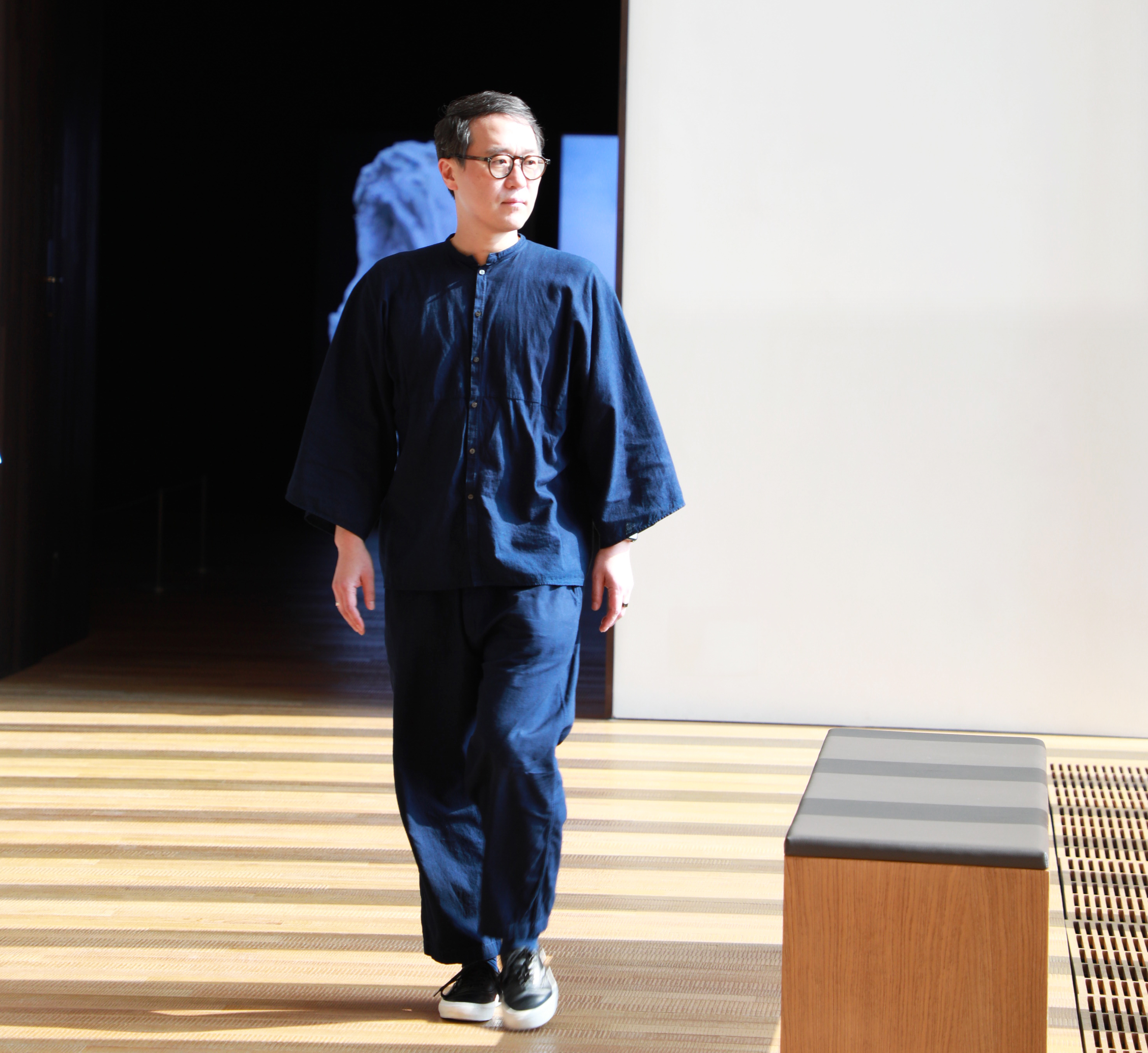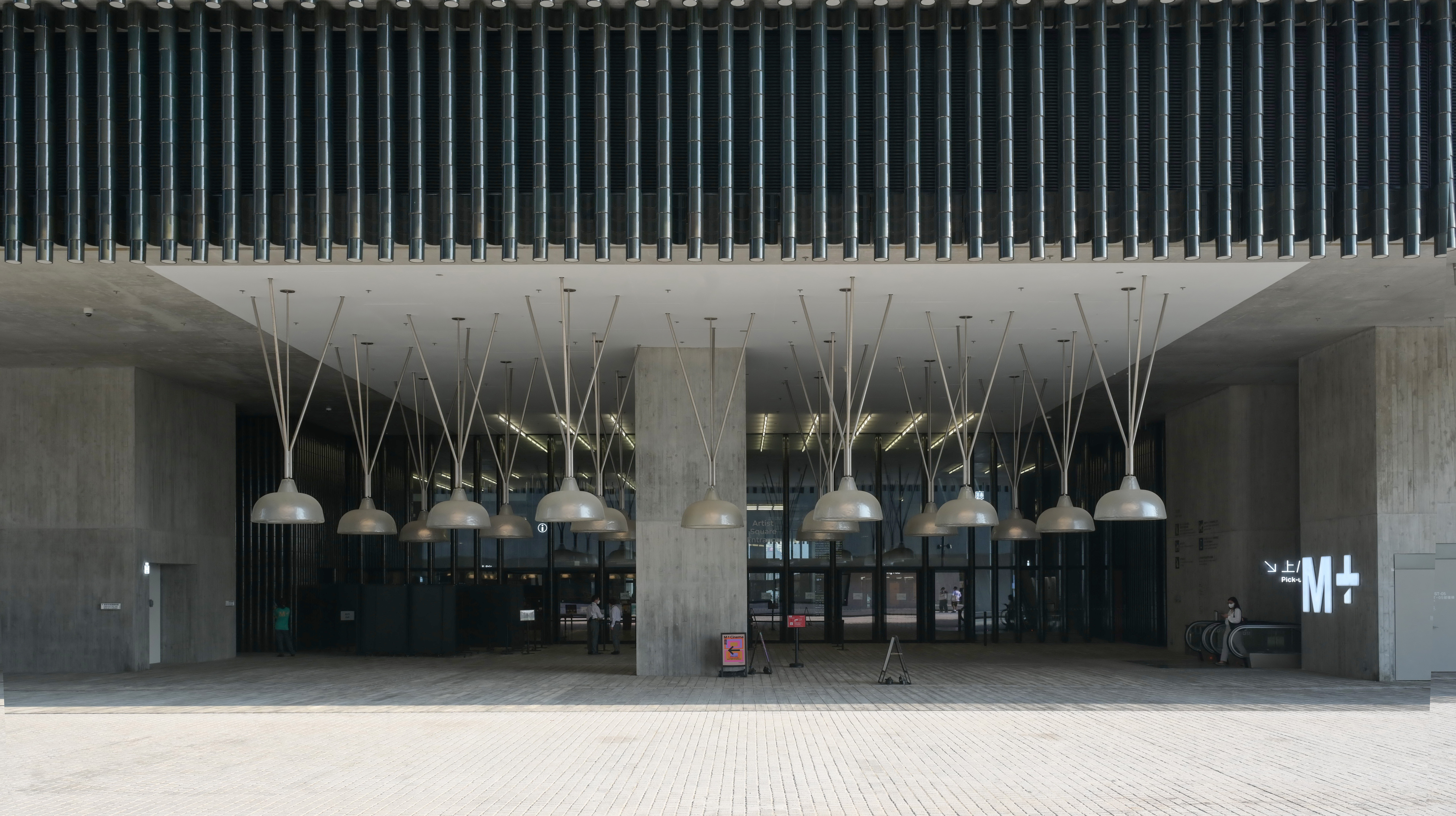Conversation: An Invention by Museums of Culture in the 21st Century ![]()
![]()
M+, Hong Kong's global museum of contemporary visual culture. Broke ground in 2014, topped out in 2018, the building finally opened its gate to the public in 2021. The long time of construction and implementation manifests M+'s sufficient preparations and promising ambition to become a new kind of museum, building on the accumulation of Hong Kong's unique time and place and the historic balance of the local and the international.
Author: YANG Chen (Correspondent)
THE BORN & REBORN

M+ positioned itself as a distinctive and innovative voice of museum of visual culture in terms of scale, collections, media, as well as the structures and exhibitions—one of the largest museums of modern and contemporary visual culture of the 20th and 21st century in the world. The public regards M+ as Hong Kong's new art landmark and emerging cultural landscape.
Nevertheless, peeling off the layers of glamourous vision, how does M+ fulfill this goal from its daily practice? Born at the intersection of cultural exchange, what original perspectives would M+ like to deliver to the public? We have had a conversation with Mr. Doryun Chong, Deputy Director, Curatorial, and Chief Curator of M+.
The “museum of arts and culture” in Hong Kong is naturally born with being paradigmatic. This exact DNA of Hong Kong comes from where it is adventitious, locally rooted and evolving.
Doryun Chong:
From the very beginning, we were modelled after very well-established and well-known global institutions such as MoMA in New York, Tate Modern in London, and Centre Pompidou in Paris. Of course these museums are 25, 45 or even 95 years old... they're much more established older institutions; we are brand new—just over two years old since the opening. However, I think we are very comparable to those museums in terms of our scale and reach, purview and perspective, and level of ambition.
What distinguishes M+ is that we are located in Asia, specifically in Hong Kong—the most international and cosmopolitan multicultural city in all of Asia. Even though we are aspired to look at the world through the global lens and local culture as others do, the fact that we're located in Asia and in this paradigmatic or archetypal city where East and West meet, determines that our perspective will naturally be different. I think this is the new advantage that we can bring.
INVENT & REINVENT

Land that spawns the confluence of its own features motivates a city's identity.
The DNA of convergence that Hong Kong is reborn with brings soil for the city's invention of cultural communications.
Further, M+ reinvents its best: a museum dedicated to collecting, exhibiting, and interpreting works of visual art, design and architecture, moving image and Hong Kong visual culture.
Doryun Chong:
East-Meets-West Center for International Cultural Exchange is based on historical foundation, right? Hong Kong as a modern city is very much formed by various exchanges over the past centuries, which is also the foundation of the city's identity and culture. It was really natural that this exchange has become the very much part of M+'s DNA since the beginning of the long preparation stage. I also felt confident when the museum opened to the public and showcased different parts of the collections that we have been building.
The East-Meets-West exchange is evident everywhere you see at M+—whether the artists who come from different parts of Asia or from the west and places that are not the west. I think it is clear that they're all parts of the “one big conversation” that is happening through M+'s collections and programmes.
There are elements of East-Meets-West exchange in almost every single special exhibition that we have been organizing. For instance, our first Special Exhibition Yayoi Kusama: 1945 to Now was the most comprehensive retrospective exhibition of the artist's career. Even though she has had a number of exhibitions in major western institutions, and certainly in Japan where she came from, the exhibition that we made emphasized the fact that she was the figure—one of the main cultural figures—who bridged between East and West in her art, career, and life. We continue that thread of narrative through all of our exhibitions.
The second big Special Exhibition that we made was Madame Song: Pioneering Art and Fashion in China. She came from Beijing, studied at the Central Academy of Fine Arts, got married to a Bulgarian fibre artist and moved to Bulgaria. She ended up being in France and then returned to China to start a whole fashion industry as China was opening up. This life story that is very much embedded and preserved in our collection, which we have from her personal archive, is immensely the story of East-Meets-West exchange. The cultural dialogue is very much central to everything that M+ does.
I personally have always believed that it is very hard to make divisions so easily. I don't think there's such a thing as “one East and one West”; rather, there are many diverse regions, cultures, and voices that are significant parts of this large category. The world has been exchanging and interchanging for such a long time. Globalism is not anything new—it has been going on for many decades, in some cases even centuries.
Hong Kong is a perfect example where it has such Chinese characters and Asian characters. It is interesting what people think is quite essentially from Hong Kong may have originally came from the west, but few people think of it as western; however, it's just part of Hong Kong culture. This kind of interpenetration or say cross pollination between cultures and across civilisations has been going on for a long time, and is also one of the stories that we want to amplify and enrich in M+.
The duality of intersection intrigues the museum to create its unique cross-disciplinary conversations among visual art, moving image, design & architecture, breaking through the boundaries of genre and medium that exist in today’s art field and industry.
Doryun Chong:
The reason why we want to make our practice multidisciplinary and also interdisciplinary is because that's a very natural and wide range of diverse expressions happening in our fields, as much so for its specialty and professional expertise. For instance, to be a serious professional painter, one needs to practise painting—a painter may not become immediately an architect without receiving professional training. Each of these disciplinary areas that contains various media or specialties requires years of training, academically and professionally...
But in the general field of culture and in the way that the public experiences it, it is usually not necessary for them to think of ‘culture' as all separate. People are all part of the very large envelope of visual culture: every day we experience architecture and maybe urban life; every day we live surrounded by design objects; these days moving images all around us are from handful devices—we spend most of our waking hours looking at some kinds of screens, including phones, billboards, and also the Facade of the M+ building. We are completely surrounded by different forms of visual cultural expressions, without necessarily thinking “Oh, this is a painting; this is a movie; this is something something...”—this is all very much part of the continuum. Different disciplines reflect the fact that professional training is needed for each area. We are also calling that interdisciplinary practice, which reflects how the general public experiences culture—they don't make the distinctions and classifications.
Different objects and media require different ways of caretaking. You don't take care of ink paintings in the same way that you do for a plastic object for instance. General public may not see these things, but what they see is a storytelling that we bring into our galleries. What we aspire to do is meticulously curated exhibitions and displays to stimulate and provoke imaginations among juxtapositions of different works and objects.
Audience engagement in M+ fosters a reinvention of perspective, embedding in the storytelling of invitation.

Doryun Chong:
There are always different types of audiences, so we can't make assumptions about what kind of language and level of difficulty would be most accessible and effective, especially for a young institution facing energetic audiences.
We have audiences who are well-educated in general and very curious. They may have visited famous museums in different countries; we also have audiences who are learning to live in a city that now has a world-class museum. Trials and errors are very much part of our routine during this process. I think that we have stood out strongly, but we don't assume that our approach is always correct. We constantly improve and make sure we are accurate.
I think one example of this sort of serious work that we have put in in terms of our audience engagement is our interpretation. All the layers of interpretations in the exhibitions through text panels, labels, audio guide, etc. have been designed in a very thoughtful and considerable way. We first decide to reach audience at a certain level, which shouldn't be only for people with undergraduate or master's degrees; it should be reached at, say, a high-school level kind of language. Then we adopt an informing, friendly, accessible, and most importantly, inviting kind of voice. Instead of trying to ask people to think in a certain way, we try to inspire audiences' curiosity so that people would start thinking on their own. Also, we don't try to textually provide information on every single work so that people can look at, read, and feel the artworks and think by themselves. This design approach on interpretation and information is a very important part of our strategy for audience engagement.
We put much effort to work collaboratively across the team. When making an exhibition, curators tend to think about their academic expertise of, for example architecture, or moving image, or ink painting. At the same time, they also work with what we call “learning curators”—curators from the Learning and Interpretation team. They are experts in interpretation and public engagement and have abundant experience in understanding our public and bring the audience's point of view and ask questions. By bringing them together, we can define what we call a “key message”, which is what we want to deliver to as broad public as possible. We hope that our audiences can come to an exhibition, get the key message, walk away with this key point, and think of and digest what they have perceived by themselves. Internally, we try to build this structure which is not hierarchical. We adjust the level of information, consider how we deliberate, how much of it is necessary, and what are the most important points. Different people bring different expertise and viewpoints. We believe that by gathering different team members together, we can communicate with our public in a most effective way.
DIVERSIFY & RECREATE
'Interdisciplinary' is a way to preserve the flow of exchange between arts and culture, which is also a mission for the museum in the 21st century.
The magic of invitation and initiation can always transfer small dots of creativity into cascade. That is how M+ narrates its threads in terms of curatorship.
What would “museum of culture” be like in the 21st century? One possible answer might be the scattered spiritual heritages on every single citizen's heart.
“That’s what we call a ‘through line’. When it’s in your DNA, it doesn’t just come out randomly, but is always there.”
Doryun Chong:
The retrospective Yayoi Kusama: 1945 to Now, was our first Special Exhibition to celebrate our first anniversary. After a successful presentation here, it travelled to the Guggenheim Museum Bilbao in Spain and was a very fruitful cooperation. It attracted over 586,000 visitors, making an attendance record for the museum. Then that exhibition continued to present at Serralves Museum of Contemporary Art in Porto, Portugal that just opened a couple of weeks ago. Through one special exhibition, we have been able to now cooperate and collaborate with two very significant European museums.
Another European museum that we are collaborating with is the Bibliothèque nationale de France in Paris, Noir & Blanc—A Story of Photography, which is a world-renowned collection of photography. We decided to take the exhibition and tour it to Hong Kong, mainland China, and Asia in our collection to create a dialogue.
We just announced our next big Special Exhibition opening in next March, Picasso for Asia: A Conversation. This is a collaboration between us and Musée national Picasso-Paris. By bringing masterpieces of Picasso and presenting M+ Collections, we intend to create a dialogue that has really never happened. That goes back to the earlier question about East-meets-West exchange. That is very much in it and always a goal of many of our projects.
“How audiences behave in the cultural sphere without even thinking about it in everyday life directly impacts what they expect from museums.”
Doryun Chong:
It's been some time that we don't think of museums as temples, right? Museums with heritage and history literally look like temples. You walk in, have an intellectual and almost spiritual experience, encounter works of art or historical artifacts, get inspired and enlightened—that was the old model of what museums should be.
Over the period of late 20th century, as culture developed in a wider context, people started experiencing culture and museum that were traditionally seen as high art or high culture. In a much more cohesive way, there is not much distinction and hierarchy between popular cultures (like cinemas) and museums. This has been happening for a while in the field of culture and society.
As we have moved to the 21st century, everybody has become much more comfortable with technologies as well as diverse cultures; everyone has in many ways become a creator and even a curator. They are no longer intimidated by it and think of it as part of the continuum of their everyday experience. As an institution, we need to be in a more social environment where it provides instead of top-down education but a core learning. We also learn from audiences by observing their reactions and behaviours. You can really think of it as a symbiotic, mutually interactive, and reactive practice—the museums are taking on this way.
BORN, AND ALSO RETURN

How would we describe “global level” in our imagination? How Hong Kong can help achieve this ambition?
Doryun Chong:
Hong Kong throughout its history has always been a “gateway”, right? I firmly believe that it will continue and actually become more and more interesting. It's something that I and my colleagues are reminded of, simply by coming to work here every day in this landmark architecture, beautifully sided and surrounded by the water. We visually and physically experience the important role that Hong Kong continues to play in conversations and exchanges between China, Asia, and the rest of the world.
We also physically embody and experience in this architecture by taking care of and researching and interpreting a storytelling of our collections. For us, “global level” is in our everyday practice. We experience the global standard and aspirations of M+, and are firmed and echoed by the appreciation of many museum colleagues—not only museum environment, but also audiences and our galleries. When people come to visit Hong Kong and M+ in not only the Art Week that just took place, but now throughout the year, you can see on their faces that this is a global-level institution. They are very impressed and obtain excitement and appreciation for what M+ does for the global artworks.
(The article has been edited.)
(This article was published in the May 2024 issue of Bauhinia Magazine)
https://res.youuu.com/zjres/2024/4/30/If0Wrx79Tshy22AbqKUk1LuTUkNUHONTI7l.jpg











掃描二維碼分享到手機














